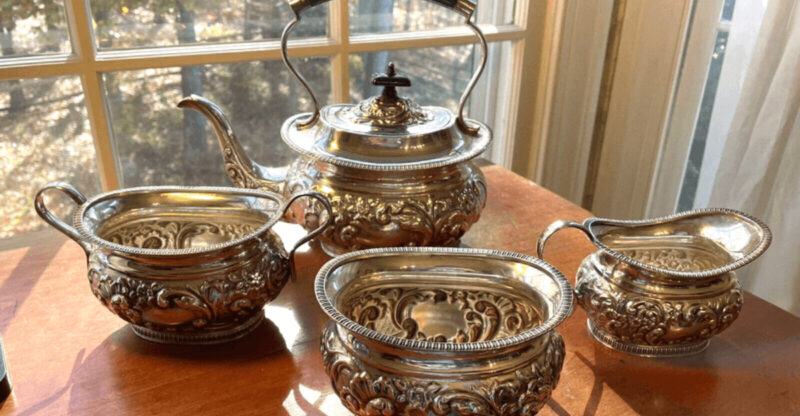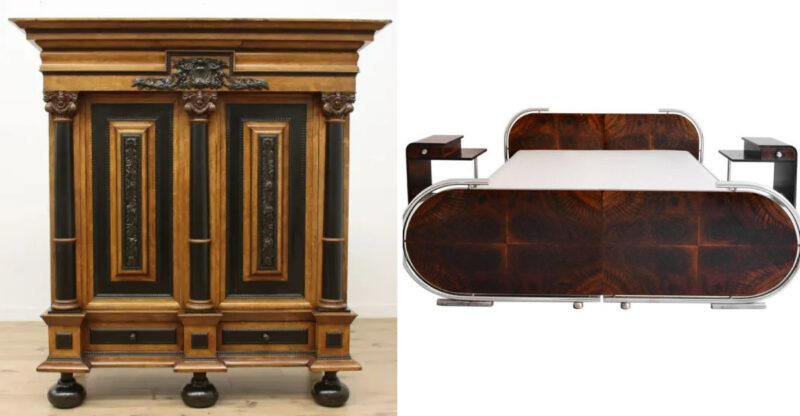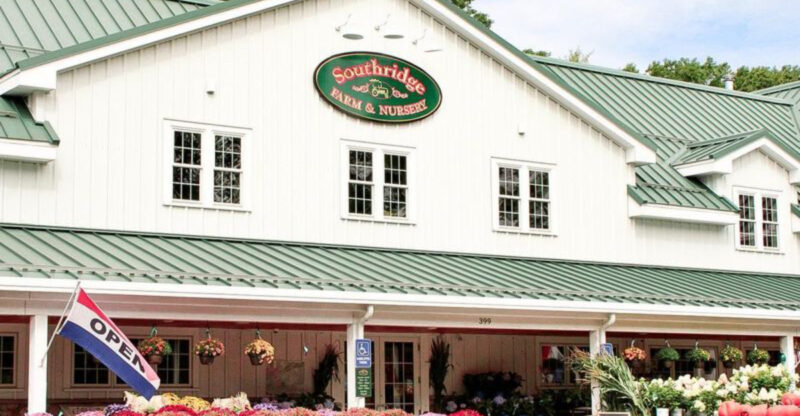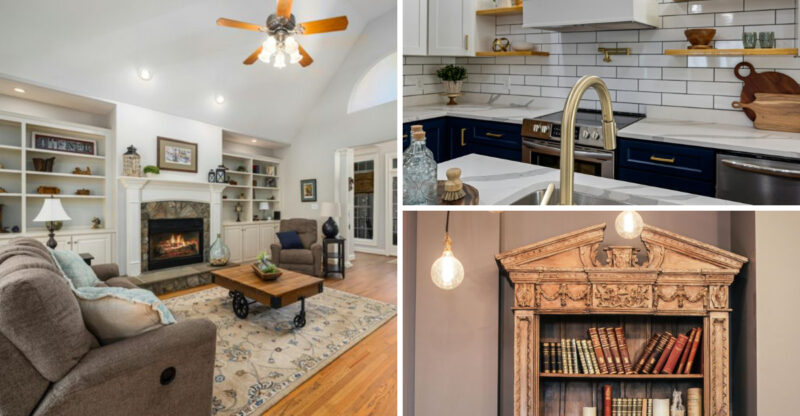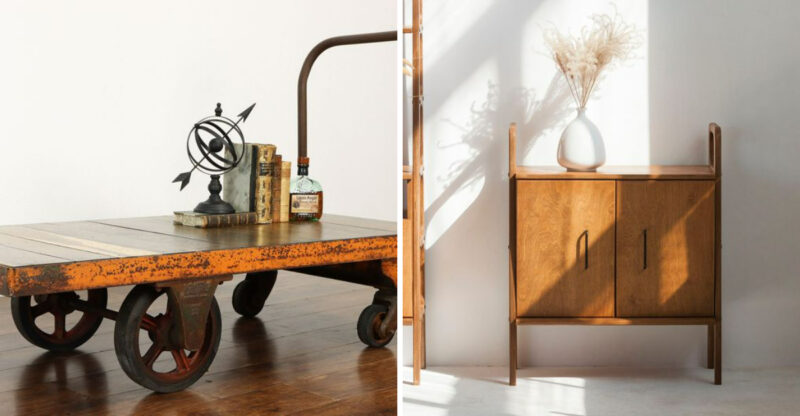10 Depression Glass Designs Popular With Collectors In Detroit, Michigan
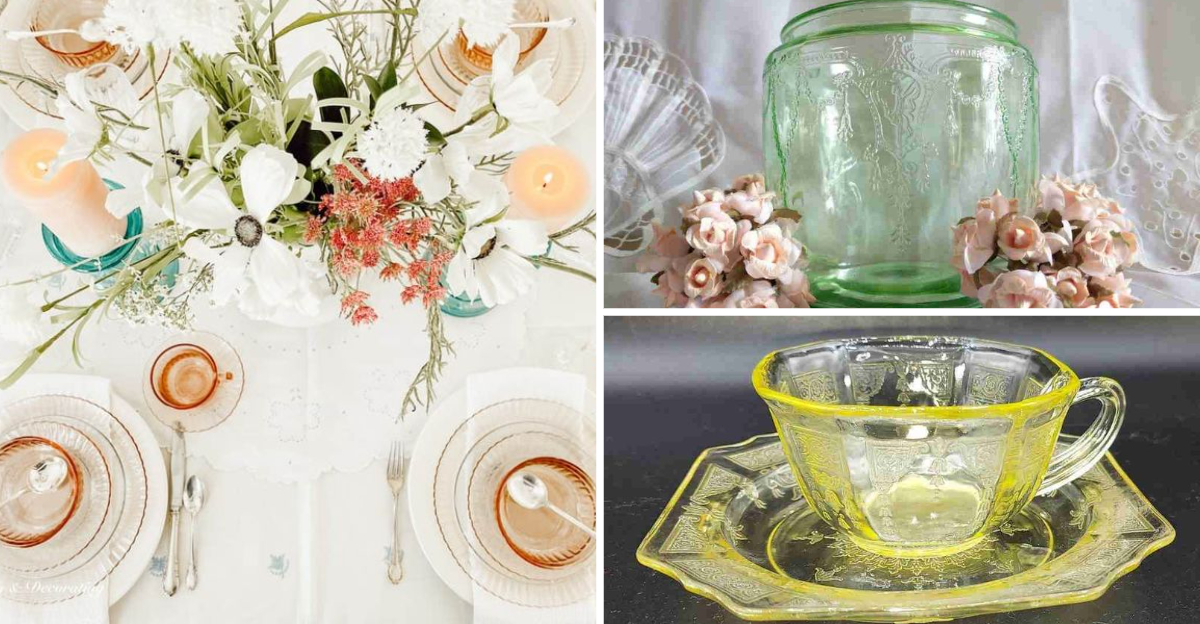
Depression glass carries a glow that belies the era in which it was made. Produced during the Great Depression, these delicate patterns offered households a sense of lightness when times were heavy, turning ordinary meals into something a little more hopeful.
Today, antique shops, estate sales, and collector circles in Detroit keep that spirit alive, treasuring the intricate designs and vivid colors that once lifted spirits nearly a century ago.
Each piece connects the present to a history of resilience, reminding collectors why these fragile creations continue to hold such powerful appeal.
1. Cameo Pattern
Delicate ballerinas dance across Cameo pattern pieces, creating an elegant tableau that Detroit collectors treasure. The soft pink, green, and yellow hues, most commonly found, cast a unique glow when displayed near windows.
Cameo pieces from the 1930s, made by MacBeth-Evans, remain highly sought after by collectors across Michigan estate sales. Local collectors particularly value the hard-to-find covered butter dishes and sandwich plates in this pattern.
2. Mayfair (Open Rose) Pattern
Blooming roses circle Mayfair pattern pieces, earning its nickname “Open Rose” among Detroit’s collecting circles. Hocking Glass Company produced this stunning design from 1931-1937, primarily in a captivating cobalt blue that stands out in any collection.
Mayfair serving pieces are among the more valuable Depression glass designs, often commanding premium prices from collectors. The pattern’s detailed floral relief catches light beautifully, making it a centerpiece in many display cabinets.
3. American Sweetheart Pattern
Scalloped edges and delicate geometric designs define the beloved American Sweetheart pattern. Produced in pastel pink and soft white, these MacBeth-Evans treasures (1930-1936) feature distinctive fluted edges that catch afternoon light.
American Sweetheart pieces are a staple at vintage markets throughout Michigan, where their fluted edges continue to attract collectors. Detroit collectors particularly seek out the pattern’s charming creamer and sugar sets, which perfectly complement weekend tea gatherings and display beautifully in kitchen window nooks.
4. Princess Pattern
Sunlight transforms Princess pattern pieces into dazzling amber jewels. Hocking Glass Company crafted this beloved design from 1931-1934, featuring distinctive vertical ribs and scalloped rims that create fascinating light patterns.
Princess pattern cups are especially popular among collectors, with their amber glow making them frequent finds in antique shops. Detroit collectors appreciate how these amber treasures warm up dining displays, especially when paired with vintage linens in complementary autumn tones.
5. Cherry Blossom Pattern
Springtime blooms eternally on Cherry Blossom pattern pieces. Jeannette Glass Company’s 1930s masterpiece features delicate cherry branches with tiny blossoms and fruit, most commonly in a dreamy pink shade that Detroit collectors adore.
Cherry Blossom centerpiece bowls, with their delicate floral design, often become highlights at Depression glass shows and antique fairs. The pattern’s romantic floral motif makes it especially popular among collectors starting their first Depression glass collection, with many Corktown residents displaying these pieces year-round.
6. Royal Lace Pattern
Hazelware’s Royal Lace pattern reigns supreme among serious Detroit collectors. Produced during the mid-1930s, this clear glass design features intricate lace-like patterns that create fascinating shadows when displayed near windows.
Royal Lace collections are prized heirlooms that are often passed down through generations, making complete sets especially valuable. The pattern’s dinner plates are particularly coveted for their detailed edge work, with local collectors often traveling across Michigan to complete their sets of this prestigious Depression glass design.
7. Madrid Pattern
Bold geometric lines define the striking Madrid pattern. Federal Glass Company produced this Art Deco masterpiece from 1932-1939 in amber, blue, pink, and clear varieties, with Detroit collectors particularly prizing the blue pieces.
Madrid serving pieces, with their bold geometric style, are easily recognizable and continue to draw the eye of collectors. The pattern’s strong architectural elements perfectly complement Detroit’s rich design heritage, making Madrid pieces frequent finds in historic Boston-Edison district homes with their matching Art Deco interiors.
8. Block Optic Pattern
Sunlight dances through Block Optic pattern pieces, creating mesmerizing prismatic effects. Hocking Glass Company produced this geometric wonder from 1929-1933 in green, pink, crystal, and yellow, with Detroit collectors particularly hunting for the vibrant green pieces.
Block Optic water sets remain consistently popular with collectors, thanks to their playful light-catching design. The pattern’s distinctive textured squares create fascinating light play in bay windows, making these pieces both functional tableware and artistic light catchers in many Palmer Woods homes.
9. Dogwood (Apple Blossom) Pattern
Floral elegance defines the Dogwood pattern, also called Apple Blossom by some collectors. MacBeth-Evans created this botanical beauty from 1930-1934 in delicate pink, featuring realistic dogwood flowers that seem to float across each piece.
Complete Dogwood dinner services are especially prized finds, with collectors valuing their realistic floral details. Detroit-area collectors particularly seek out the pattern’s rare serving pieces, with many passionate collectors in the Indian Village neighborhood displaying their pink Dogwood treasures in carefully curated china cabinets.
10. Patrician (Spoke) Pattern
Radiating elegance defines Patrician pattern pieces, nicknamed “Spoke” for their distinctive wheel-like design. Federal Glass Company produced this geometric beauty from 1933-1937, with Detroit collectors particularly valuing the amber-colored pieces. Patrician, also known as the Spoke pattern, is a common feature in many Depression glass displays and collector exhibits.
The distinctive spoke design creates fascinating light patterns when displayed near windows, making these pieces popular among collectors in Detroit’s historic Lafayette Park neighborhood, where mid-century modern homes showcase these vintage treasures beautifully.

